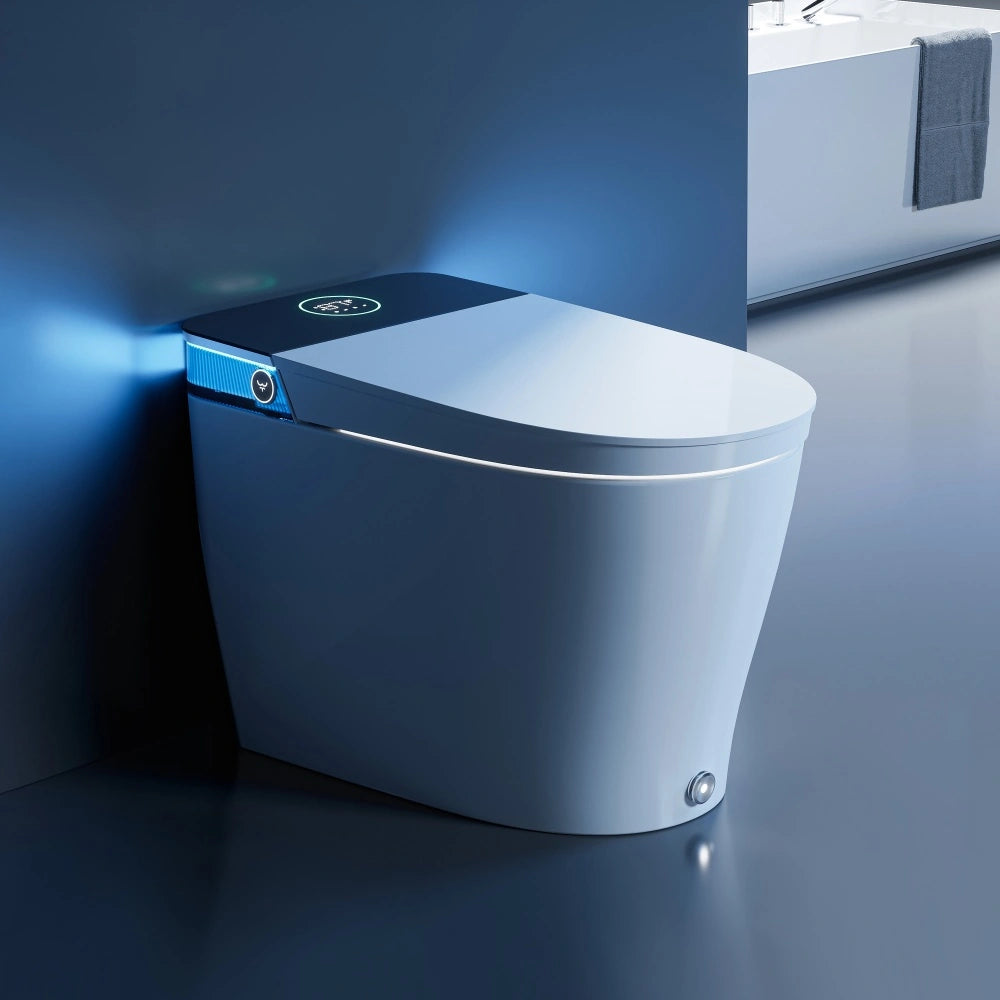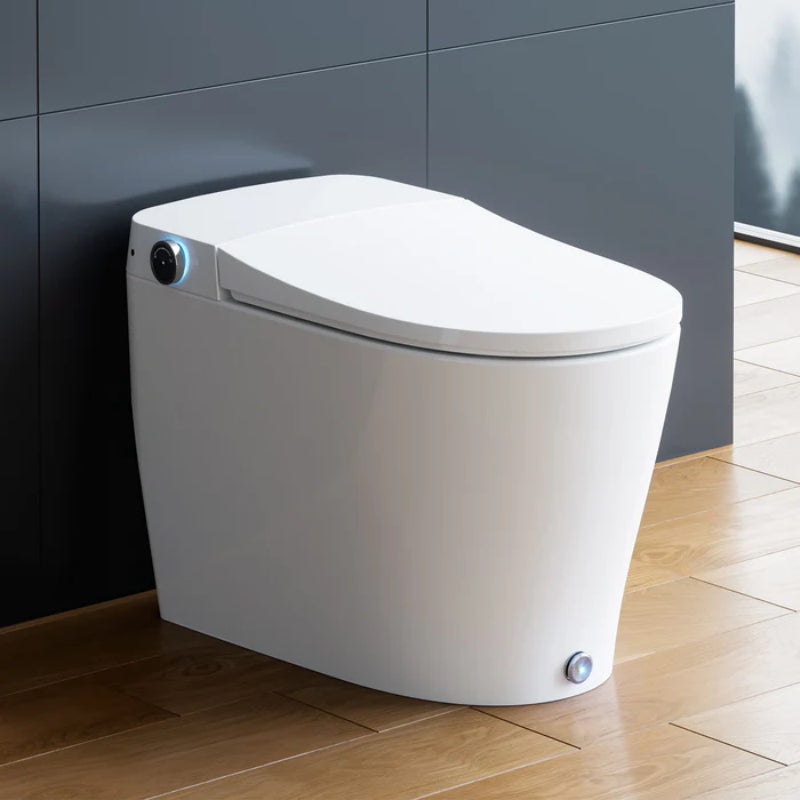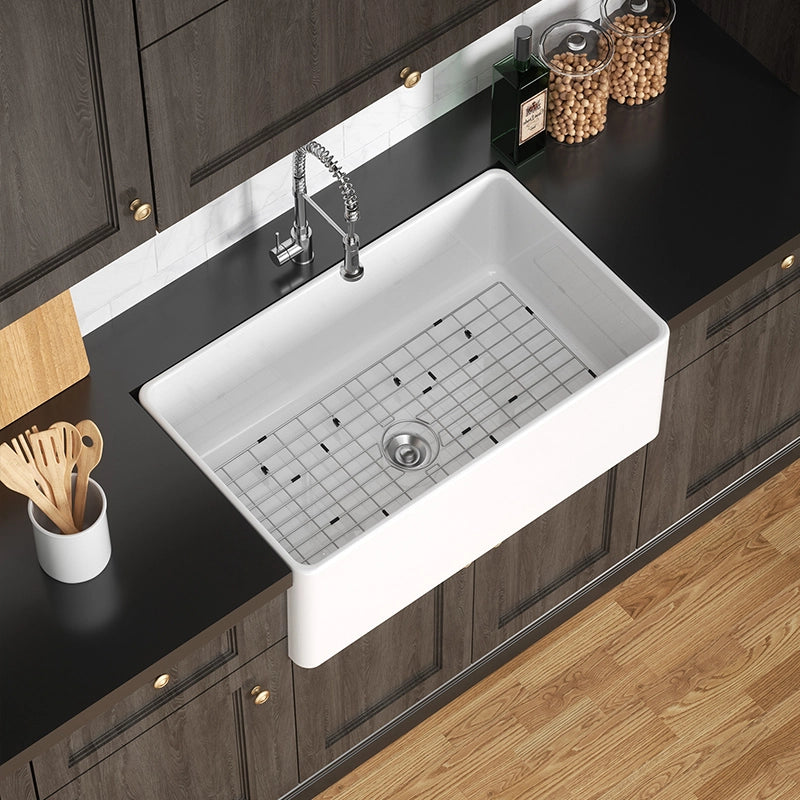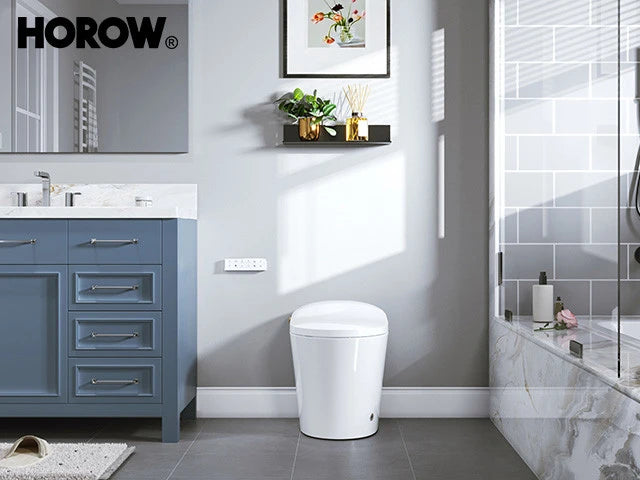Can Bidets cause UTIs? It's a question many of us wonder about as we explore better ways to stay clean after toilets and reduce the risk of UTI.
More and more people are turning to high-tech bidets as a modern alternative to traditional toilet paper. However, the questions remain: Do bidets cause UTIs, or are they a cleaner option that helps prevent UTIs?
Today, we will analyze this topic thoroughly and present you with the facts on the link between bidet use and UTI.

(Copyright image from https://www.freepik.com/free-vector/informative-illustration-urinary-tract-infections_9938607.htm#fromView=search&page=1&position=22&uuid=9b9b4d4f-c00f-44f7-947f-5e7f4feb0731">Image by brgfx</a> on Freepik)
Understanding UTIs
To answer the question, "Do bidets cause UTI?" we need to develop a deeper understanding of UTI first.
Urinary Tract Infections (UTIs) come second in the list of most common infectious diseases that affect over 150 million people worldwide.[1] About 40 to 60 percent of women would experience a UTI in their lifetime, while men have a chance of 13 percent of developing a UTI over their lifetimes. [2]
It causes pain and burning during urination and can elicit an urge to urinate frequently as well, posing seriously disturbance to our daily life and work activities.
What Is Urinary Tract Infection Exactly?
Urinary tract infection, short for UTI, is a type of infection usually caused by bacteria that affects any part of the urinary system, such as the bladder, ureters, and urethra.
How do You Know if You Have Urinary Tract Infection?
- Frequent urge to urinate
- A burning or painful sensation during urination
- Passing frequent, small amounts of urine
- Cloudy and bloody urine
- Feeling the need to urinate immediately
- A feeling of pressure in the lower abdomen or back
How do Women and Men Differ Regarding Urinary Tract Infections?
- Women: The female urethra is shorter and closer to the anus and vagina, which can allow bacteria from these two areas and the external environment to reach the urethra more easily, thereby causing the infection.
- Men: Although the urethra opening of men is located at the tip of the penis and is far from the way from the anus, men can get UTI for other reasons like infected or enlarged prostate, urinary tract obstruction, and use of urinary catheters.
Do Bidets Cause UTI? Exploring UTI Causes and Bidet Functions
Do bidets cause UTIs? Let's break down this question into smaller parts to grasp it better.
How are UTIs Typically Caused?
Urinary Tract Infections (UTIs) are typically caused by the invasion and colonization of bacteria, especially E. coli, in the urinary tract.

What are the Factors that Increase the Risk of UTI?
- Sex and catheters(pee draining tubes) can transfer bacteria directly to the urinary tract, especially when you are not keeping good personal hygiene practices after sex or toilet usage.
- Pee tube problemslike narrow spots, swelling, and blockage, caused by enlarged prostates, urinary tract stones, and urethral strictures, stop pee from flowing normally. At the same time, not drinking enough water makes pee weaker and, therefore, creates a congenial environment for germs to grow.
- Poor hygiene practices can significantly contribute to the risk of developing urinary tract infections (UTIs). Some common hygiene-related issues include wiping from back to front after bowel movements, insufficient cleaning of the genital and perianal areas, and using irritating or unsanitary products.
Here is a more detailed illustration of UTI risk factors for a quick review:
|
Common Factors |
Women |
Men |
Individual Risk Factors |
|
Sexual activity |
Shorter urethra |
Enlarged prostate |
Diabetes |
|
Urethral abnormalities |
Pregnancy |
Urethral stricture |
Genetic predisposition |
|
Indwelling catheters |
Use of birth control |
Urinary tract stones |
Urinary tract anomalies |
|
Urinary tract obstruction |
Menopause |
|
Recent urologic procedures |
|
Inadequate hydration |
|
|
Immunocompromised State |
|
Poor hygiene practices |
|
|
|
What is The Role of Bidets in UTI Prevention?
- Enhanced Hygiene: Bidets provide a more thorough cleaning method compared to traditional toilet paper, which can significantly reduce the risk of UTIs by lowering the presence of bacteria in the genital and anal regions.
- Effective Bacterial Removal: Bidets' water-based cleansing action is more efficient at removing fecal residue, a common culprit in UTIs, thus preventing the spread of bacteria to the urinary tract.
- Gender-Specific Benefits: For women, bidets are especially beneficial as they help prevent the transfer of bacteria from the anal area to the urethra, a key factor in the development of UTIs.
- Reduced Irritation: The gentle nature of bidet cleansing can minimize irritation and inflammation often caused by the abrasiveness of toilet paper, which in turn may lead to a decreased likelihood of UTIs.
Do Bidets Cause UTI? Understanding the Underlying Hazards
There is no definite answer to the questions “Do bidets cause UTI?" or “Are bidets sanitary for females?". While bidets can aid in UTI prevention and promote hygiene, there are factors associated with their use that could potentially increase the risk of UTIs if not properly managed:
- Water quality:Using contaminated water in a bidet can introduce harmful bacteria directly into the genital area, increasing the risk of infection.
- Nozzle cleanliness:If the bidet nozzle is not clean, it can transfer bacteria to the user, leading to a higher risk of UTIs.
- Water temperature:Water that is too hot can cause burns and tissue damage, while water that is too cold can lead to discomfort and potentially increase the risk of infection.
- Usage: Incorrect positioning or improper use of the bidet can lead to ineffective cleansing and may even spread bacteria rather than remove it.
- Drying:After using a bidet, if not thoroughly dried, the damp environment may promote bacterial growth, increasing the risk of UTI.

Do Bidets Cause UTI? Achieving Optimal Uses to Reduce UTI Risk
Do bidets cause UTIs? Well, yes and no. There is no direct causation between the two. However, to reduce the risk of catching UTI from bidet toilet use, there are some best practices you should follow for optimal hygiene and UTI prevention.
- Proper Bidet Cleaning and Maintenance: To maintain its hygiene, regularly clean your bidet. Make sure to clean the nozzle and other parts that come into contact with water.
- Water Quality and Temperature:Use filtered or clean water and adjust the temperature to a comfortable level to avoid irritation.
- Personal Hygiene and Wiping Technique: Even with a bidet, it's important to maintain good personal hygiene. Try to wipe from front to back to avoid bringing feces to the urinary opening.
- Bidet Settings: Lower the water pressure to avoid irritation or damage to sensitive areas and direct the water spray away from the urethral area to avoid pushing bacteria towards it to ensure comfortable and efficient cleaning.
- Proper Drying Techniques: Pat dry with a clean towel or adopt air drying to ensure the area is dry properly.
Do Bidets Cause UTI? Prioritizing the UTI-Reduction Features
The answer to the question “Do bidets cause UTI?" also depends on which bidets you are choosing. To reduce the risk of UTI, here are some features you should look for in smart bidet toilets:
- Hygienic Water Source: Opt for a bidet with a clean water supply, preferably with a built-in filter.
- Adjustable Water Pressure and Temperature: The ability to control water pressure and temperature can ensure a comfortable and effective cleanse.
- Posterior and Female Wash Options: Different nozzle positions and water flow patterns can accommodate the specific needs of males and females.
- Nozzle Position and Movement: A nozzle that can be adjusted or moved can provide a more thorough and targeted cleanse.
- Self-Cleaning Nozzle:A bidet with a self-cleaning nozzle can help prevent the buildup of bacteria with the least maintenance effort.
HOROW Bidet Toilets for Ultimate UTI Reduction

When searching for answers to "Do bidets cause UTI?" we understand you are not only trying to find the explanation but also looking for a bathroom upgrade that offers unparalleled comfort and health benefits.
If that’s the case, please allow us to introduce the HOROW Bidet Toilet Combo T05 to you. The T05 smart bidet toilet is a cutting-edge solution where luxury meets health. Highlight features of Our T05 models include:
- Advanced Bidet Features: It offers various wash options, including front and rear wash, gentle feminine wash, oscillating wash (back-and-forth sway of water stream), and pulsating wash (varying water pressure messaging). These features are particularly beneficial in minimizing the presence of harmful bacteria while ensuring a comfortable cleaning experience.
- Adjustable Dryer and Water Temperature:The smart bidets T05 help reduce the risk of UTIs by promoting thorough drying and comfortable cleansing, minimizing moisture buildup and bacterial growth in sensitive areas.
- Anti-BiosisNozzle with Auto Wash: The nozzle of smart bidets toilet T05 built of antibacterial materials allows automatically wash after each use, reducing the risk of bacterial growth and contamination during subsequent uses.
- Smart Flushing Options: With 4-way flushing including auto, foot touch, remote, and manual control, it ensures efficient flushing no matter what the circumstance is, reducing the risk of bacterial buildup and urinary infections.
- Hands-Free Operation: Automatic opening/closing via auto or foot touch, along with an easy-to-use remote control, promotes hygienic and effortless operation, reducing the risk of contamination.
Upgrade your bathroom with the HOROW Bidet Toilet Combo T05 for unmatched comfort and health benefits. With advanced bidet features, adjustable dryer and water temperature, smart flushing options, and hands-free operation, the T05 reduces the risk of UTIs while providing luxurious convenience. Choose T05 for a healthier lifestyle today!
References
[1] BMC Infectious Diseases/2023. Prevalence of urinary tract infection and antimicrobial resistance patterns of uropathogenic with biofilm-forming capacity among outpatients in Morogoro, Tanzania: a cross-sectional study. Available at https://bmcinfectdis.biomedcentral.com/articles/0.86/s2879-023-0864-x. (Accessed on April 7th, 2024)
[2] Verywellhealth/2022. Urinary Tract Infection Facts and Statistics: What You Need to Know. Available at https://www.verywellhealth.com/urinary-tract-infection-facts-and-statistics-6503753. (Accessed on April 7th, 2024)








Leave a comment
This site is protected by hCaptcha and the hCaptcha Privacy Policy and Terms of Service apply.